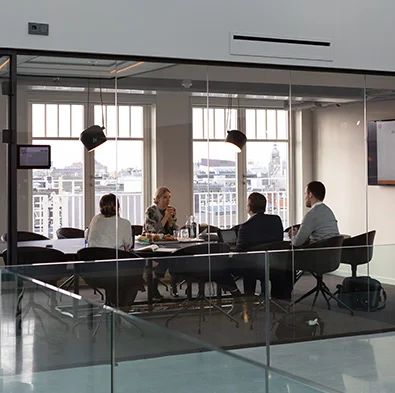The Future of Sustainable Living: Corporate Responsibility and Everyday Benefits
Over the last decade, sustainability has become a matter of reputation and a defining economic, legislative, and social reality reshaping how companies operate. Whereas in the past, consumers were often blamed for the adverse effects of overconsumption, the truth is that structural decisions made by producers and policymakers carry the most significant weight. The choice of materials, the durability of products, the design of packaging, and the transparency of supply chains are determined by corporate strategies rather than individual consumers. Today, new legislation, investor pressure, and evolving consumer behavior ensure that these strategies are no longer optional but vital to long-term competitiveness.
Converging forces, such as stronger policies, shifting consumer expectations, and market realities, counteract the unsustainable model of overconsumption and strengthen a greener future.

A pivotal example of this shift is the Corporate Sustainability Reporting Directive (CSRD), which requires companies to publish detailed, verifiable information on environmental, social, and governance (ESG) impacts. Supported by the European Sustainability Reporting Standards (ESRS), the CSRD eliminates the possibility of “greenwashing” through superficial marketing and obliges companies to demonstrate how they actively reduce their carbon footprint and contribute to a more equitable economy. At the same time, the Ecodesign for Sustainable Products Regulation (ESPR), adopted in 2024, introduces strict criteria for product reparability, energy efficiency, and durability in electronics, appliances, and textiles. In parallel, the EU Deforestation Regulation (EUDR) restricts access to the European market for commodities such as coffee, cocoa, soy, and palm oil unless companies can prove that their production does not contribute to deforestation. Collectively, these laws create a framework where businesses must reinvent their models, moving away from short-term profit and towards long-term value creation.
How do consumer preferences influence the sustainability path of a company?
Legislation, however, is only one part of the story. Consumer preferences, especially among younger generations, are rapidly changing in ways that reinforce these regulatory shifts. According to the 2023 Eurobarometer, more than 70% of young Europeans prioritize sustainable products and report avoiding brands associated with unsustainable practices. In Romania, surveys by IRES (2024) show similar patterns: nearly half of urban youth say they are cutting back on fast food and single-use products, instead choosing home cooking, local food, and home-brewed coffee. These choices are motivated by both financial savings and health considerations. Euromonitor (2023) data illustrates that giving up a daily café-bought coffee can save consumers up to €1,500 per year, while preparing meals at home reduces food costs by 20–30% in the long run. Sustainable living thus demonstrates itself as not only environmentally responsible but also financially advantageous and healthier.
What Sustainable Living Means for the Youngest Generation – in a Nutshell
It is important to understand the mindsets of the young generation and their needs and expectations. Otherwise, companies that develop and offer products or services will neglect important issues that can affect their business.
Let’s see what the most important understandings of your generation are vs the Sustainability Living.
- Future Orientation: For them, sustainability is tied directly to survival and opportunity – shaping a liveable future rather than a marketing label.
- Activism & Demands: They hold companies accountable, expecting transparency and purpose-driven brands, and they are quick to call out “greenwashing.”
- Financial Awareness: Younger generations see sustainability as a wise economic choice – long-term savings through durability, reuse, and mindful consumption.
- Health & Wellbeing: Choosing sustainable options often coincides with healthier lifestyles—less fast food, more home cooking, and plant-based or local diets.
- Digital Influence: Exposure to global issues via social media makes climate awareness and sustainable practices visible, shareable, and aspirational.
- Everyday Habits: From reducing single-use plastics to favoring public transport, bike-sharing, and second-hand clothing, sustainable living is normalized behavior.
- Identity & Values: Sustainability is a core element of personal identity, with many young people associating their self-image and social belonging with eco-conscious choices.
“Good design is eco-design. It makes sense in every way — aesthetically, functionally, and for the planet.” — Victor Papanek
For today’s youngest generation, sustainability is not just a “trend” but part of their daily lifestyle logic and identity. It blends values, practical choices, and future-oriented thinking. In short, it means:
Companies being pushed by consumer preferences seek a diversification and sustainability strategy with long-term objectives that converge business growth with new consumer-demanding trends.
Overlooking the consumer trends and their impact, is this a matter?
Companies that ignore these trends are already experiencing significant losses. Eurostat reported a 12% decline in revenues across Europe between 2020 and 2023 in the fast-fashion industry, reflecting growing consumer demand for durable, high-quality products. In the food sector, fast-food chains face stagnant growth in mature European markets, as customers increasingly favor healthier and more affordable alternatives. In the electronics industry, the growing “right to repair” movement has undermined the appeal of business models based on planned obsolescence, forcing companies to adapt or risk losing market share. These are not abstract threats; they are measurable market realities shaped by both policy and consumer demand.


For forward-looking companies, this transformation offers clear opportunities. Circular business models based on repair, reuse, and recycling satisfy regulatory requirements, open new revenue streams, and strengthen customer loyalty. Energy efficiency and sustainable product design investments reduce operating costs and increase resilience in volatile markets. Deloitte’s 2024 Global Sustainability Survey shows that companies integrating sustainability into their core strategy are 20% more likely to attract investors and to retain long-term customer trust. In an uncertain economic landscape, stability and loyalty are invaluable assets.
Sustainable living should not be seen as a burden imposed by lawmakers or a sacrifice demanded by consumers. Instead, it results from converging forces: stronger policies, shifting consumer expectations, and market realities.
Companies have a central role in enabling this transition, not by blaming consumers for plastic packaging or high carbon footprints, but by redesigning production models to offer durable, affordable, and transparent products.
This corporate responsibility is not about punishment; it is about seizing the opportunity to create lasting value, build resilience, and lead in a global economy that is steadily leaving behind the unsustainable model of overconsumption.
CONTACT US! If you want to reshape the future of your products or services by embracing sustainable business models.






